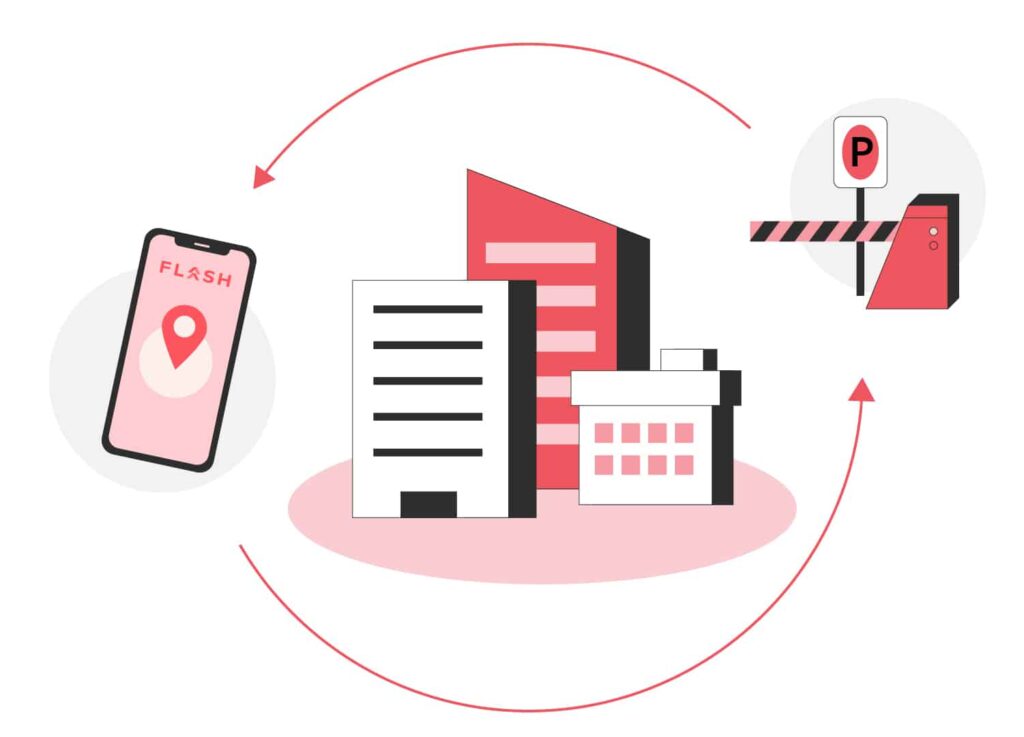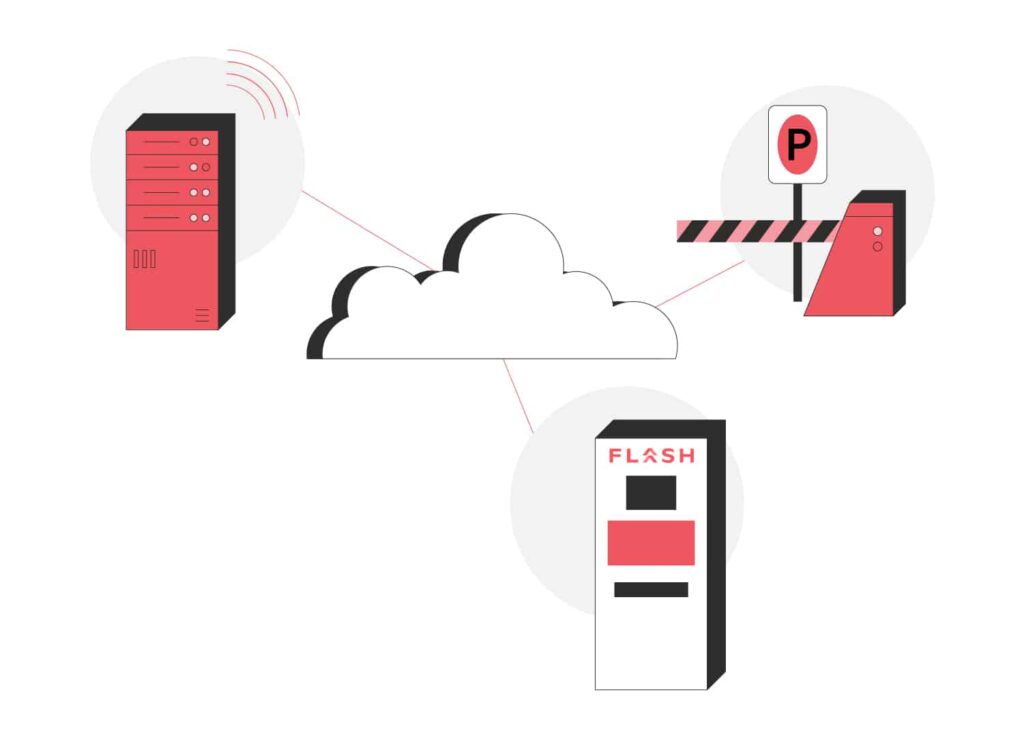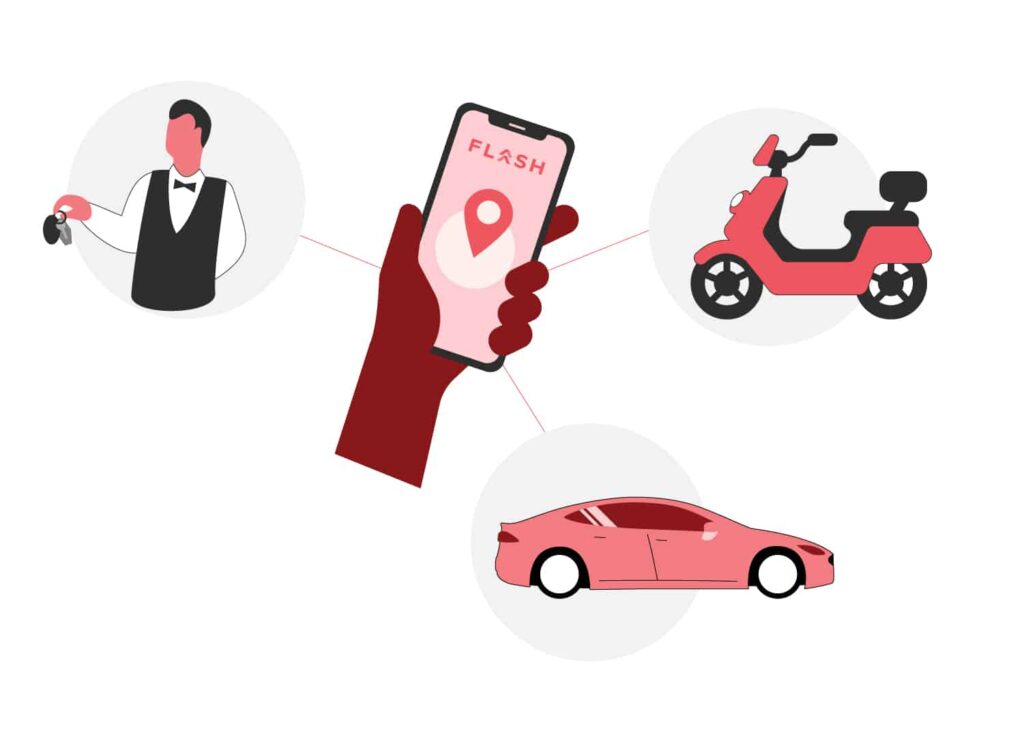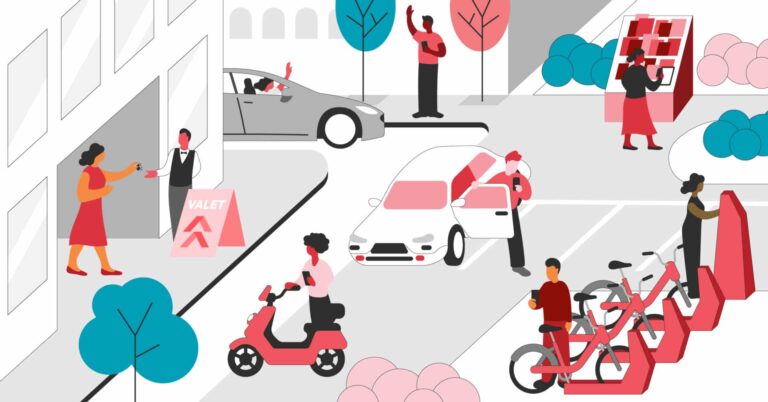What exactly makes cities “smart?” And—how does mobility factor into the equation?
Smart cities are fueled by the ebb and flow of their citizens, and as we’ve written before—if citizens are the lifeblood of a city, then mobility is the heartbeat that powers their movement. It’s in a city’s best interest to adapt and discover fast, convenient, and innovative ways to move people and goods. It’s only through this optimal mobility (which includes parking technology) that people can go about their daily business, and in turn, improve the health of their local environments.
The better the input into a city, the stronger the output.
How Does Mobility Affect Smart Cities?

As with any other marketplace, there are two sides to mobility: supply and demand, or in this case, backend technology and consumer-facing technology. The smooth interaction of one with the other drives modern transportation. Through this market, goods are delivered to homes, and people commute to their jobs.
The better the mobility systems, and the more sophisticated the supply and demand functions, the more efficient a city becomes. This brings along a host of benefits, some of which are:
- Increased appetite for newer technology—The need for more efficiency, both on the backend and the consumer-facing side, will likely drive innovation. New York City’s MTA subway system is an example of what happens when better mobility systems are implemented. Despite various delays in delivery, supply and demand are coming together in the form of new ticketing technology and the next generation of subway cars.
- Opportunities for job enhancement—Due to healthy competition, new businesses will emerge. These new companies will likely source employees from the city itself, fostering economic growth and providing stability.
Happier people—“People are happier when they are healthy and connected with others,” according to Smart Cities Dive. Longer commutes can even affect divorce rates, as more stress is placed on a relationship. Sophisticated mobility systems with multiple forms of transit, such as bikes and e-bikes, can increase happiness through options and convenience. The message is clear: better travel equals happier citizens.
What Is Supply in Mobility?

Mobility is a vast network of interconnected infrastructure—from internet signals branching through the air to wires and cables underground. Some technological enhancements, such as introducing cloud computing, have allowed for visibility into data and connectivity between multiple locations like never before.
Supply includes the technologies that businesses rely on to operate. In parking, FLASH is a supplier of advanced PARCS software, valet, touchless technology, and hardware components. This means that FLASH supplies parking assets ranging from hospitals to garages with the technology to facilitate and pay for parking—and much more.
In today’s landscape, to be a top mobility and parking supplier is to have a bit of business clairvoyance. The most successful are those that can spot trends beforehand and offer solutions to today’s problems and those that may happen tomorrow. In other words—being future-ready.
The Demand Side of Mobility

Contactless, QR, mobile-first—these are all selling points that demand-side mobility providers use to attract consumers.
Within parking, this technology is created by leaders like Arrive. Because, no matter how advanced an operator’s technology may be, it doesn’t amount to much without the proper interface that consumers in the last-mile phase use to find an asset. With Arrive’s properties, such as the parking-finder app ParkWhiz, users can find parking assets that boast some of the latest tech. Thus, a cycle of supply and demand in technology is formed that facilitates movement.
Payment technology also falls within the demand category when it comes to interfacing with customers. Scan-to-pay services developed by Arrive go beyond last-mile to the moment of access and exit and provide the next stage of convenience for customers—not only within parking, but across the entire mobility landscape.
Connecting Mobility Supply and Demand in Smart Cities
Integrations that bring out the best in parking technology, mobility management, and smart cities allow the mobility market to function. FLASH looks to the future by discovering and providing new integrations with leading demand-side providers. For an example of how, check out what we did with Uber and the City of Las Vegas.
Dynamic demand pricing is another method operators can utilize technology in an innovative and sustainable way that directly reaches the customer. Through a platform that allows prices to update and change depending on consumer demand, customers can reap benefits down to the dollars spent.
If you want to imagine the ideal scenario where backend tech and consumer-facing programs integrate seamlessly—think about the mobility hub. Not simply parking garages—mobility hubs will lead customers to various forms of travel and services within one structure, whether it’s micro-mobility or grocery delivery right to their cars. They are a transportation hub within the modern (and future) smart city. Operators can leverage the latest technology while customers will be interfacing in novel ways to choose the services they need.
Never before has mobility touched our lives in so many ways. We’re lucky that we wake up every day thinking about how to make it even better. To learn more about what FLASH does to build mobility in smart cities, watch our leaders talk about where we’re headed.
Join the Parking Revolution, Subscribe
to Our Newsletter
We’re disrupting the parking industry because we believe our customers, consumers, and cities deserve better.

